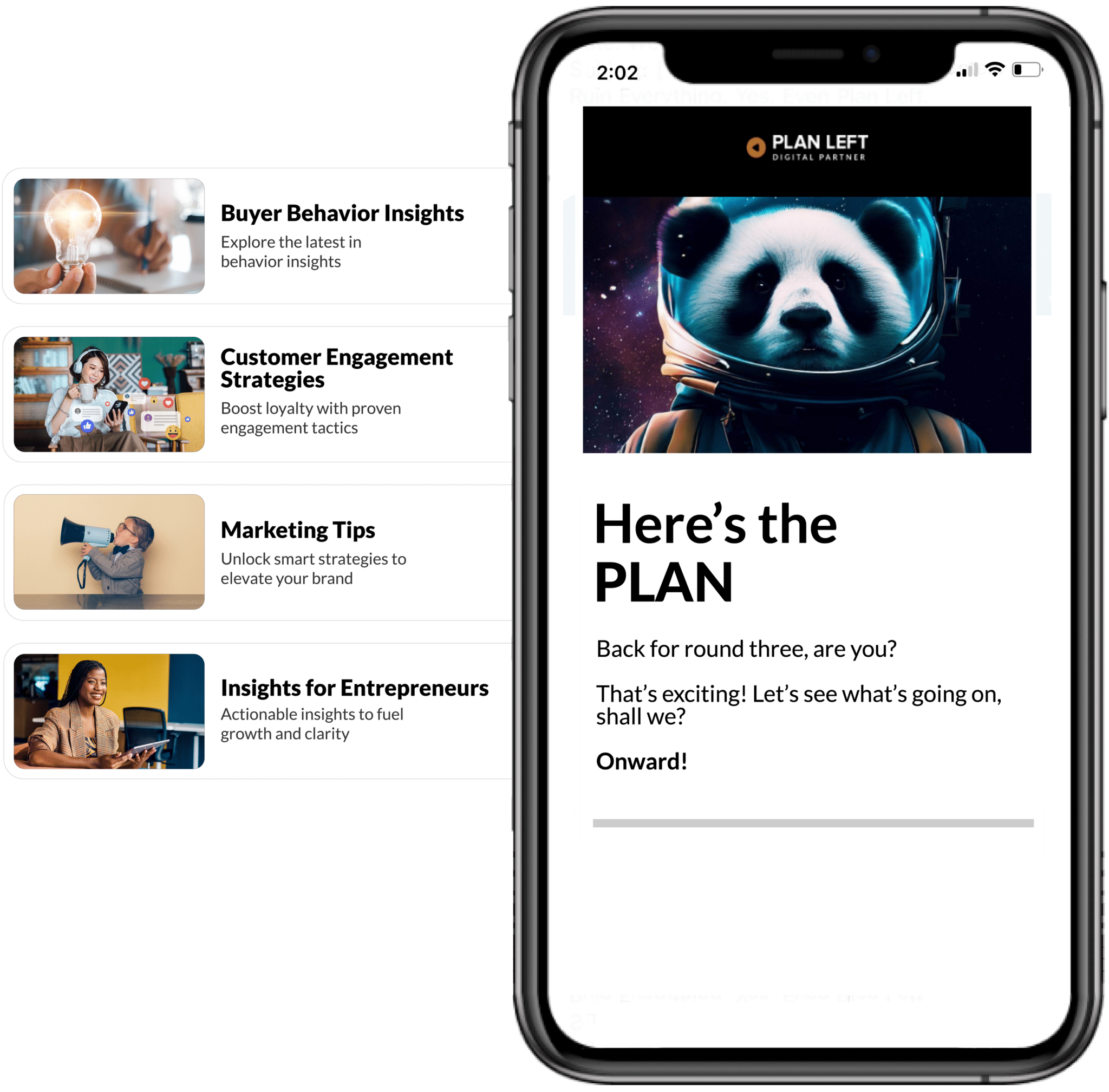
The Hidden Cost of Marketing Agencies: Why Building In-House Capabilities Matters
Marketing agencies solve an immediate problem: you need marketing expertise and don’t have it internally. The transaction seems straightforward—you pay for their knowledge and execution.
But this transaction masks a more complex reality that most business owners don’t recognize until they’re deep into the relationship: the real cost isn’t the monthly retainer. It’s what you’re not building while the agency handles everything.
The Price Tag You See vs. The Investment You Make
The agency’s quoted price covers their time and services. What it doesn’t capture is the hidden costs that accumulate over the life of the relationship: the strategic dependency that develops, the knowledge that stays with the agency instead of transferring to your business, the data you don’t own, and the agility you sacrifice by having marketing managed externally.
Hidden Cost #1: Knowledge and Data Dependency
The Agency Black Box Problem
Most agency relationships operate as black boxes. The agency executes campaigns, generates reports, and delivers results—but the strategic thinking, the data insights, and the lessons learned stay primarily with them. You know what they did and what happened, but you don’t develop deep understanding of why certain approaches worked or how to replicate success independently.
This knowledge gap isn’t necessarily malicious. Agencies are busy serving multiple clients, and transferring knowledge isn’t their primary deliverable. But the result is that your business remains dependent on the agency’s institutional knowledge about your marketing.
What Happens When the Relationship Ends
When an agency relationship ends—whether by your choice or theirs—you often discover just how much dependency had developed. The data lives in their accounts. The strategy exists primarily in their team’s minds. The systems they built aren’t easily transferable. You’re essentially starting from zero with your next marketing approach, having invested months or years without building internal capability.
Hidden Cost #2: Misaligned Incentives
Why Agencies Profit from Your Dependency
Agencies are evaluated on client retention. The longer you stay, the more successful they are. This creates a subtle but significant incentive misalignment: agencies benefit from your continued dependence on their services, while your business would be better served by developing internal capabilities that reduce that dependence over time.
This doesn’t make agencies bad actors—it’s simply the reality of their business model. They’re optimizing for what makes sense for their business, which may not align perfectly with what’s best for yours.
Retention Metrics vs. Your Business Growth
An agency’s internal success metrics focus on client retention, contract value, and profitability. Your business success metrics focus on revenue growth, customer acquisition, and sustainable systems. These goals can align, but they can also diverge—particularly when the most effective long-term strategy for your business would involve building internal capabilities that reduce agency dependence.
Hidden Cost #3: Loss of Marketing Intelligence
The Strategic Disadvantage of Outsourced Thinking
When strategic marketing thinking happens externally, your internal team doesn’t develop marketing fluency. This creates a strategic disadvantage that extends beyond the specific campaigns the agency manages. Your team can’t recognize opportunities, can’t troubleshoot problems, and can’t make informed decisions about marketing direction without agency involvement.
Why Your Team Needs to Understand Marketing
Even if you continue to use external resources for execution, your internal team benefits enormously from understanding marketing fundamentals. This knowledge allows them to evaluate recommendations critically, recognize when strategies aren’t working, and make day-to-day decisions that support rather than undermine marketing efforts.
Marketing isn’t a specialized function that only experts can understand—it’s a business discipline that leadership and key team members should be fluent in, regardless of who handles execution.
Hidden Cost #4: Slow Response Time and Lack of Agility
The Communication Bottleneck
Agency relationships introduce communication layers that slow decision-making and execution. Something that could be adjusted immediately with internal capabilities instead requires emails, meetings, and agency team coordination. In fast-moving markets, this lag can mean missed opportunities or delayed responses to emerging problems.
Missing Market Opportunities
When marketing is externally managed, you need to communicate opportunities to the agency, wait for them to develop strategy, review and approve approaches, and then wait for execution. By the time you’ve moved through this process, the opportunity may have passed. Internal capabilities allow you to respond quickly when opportunities emerge.
Hidden Cost #5: Generic Strategies That Don’t Scale
The Copy-Paste Approach
Many agencies apply similar frameworks and strategies across multiple clients. This efficiency helps them serve more clients profitably, but it means your marketing strategy may not be truly customized to your unique business model, market position, or growth stage. What worked for their other clients might not translate perfectly to your situation.
Why Your Business Deserves Custom Solutions
Your business has unique strengths, specific challenges, and particular opportunities that generic strategies can’t fully address. Building internal marketing capabilities allows you to develop approaches specifically designed for your business rather than adapting someone else’s playbook.
The Alternative: Building Internal Capabilities
Ownership Without Overwhelming Your Team
Building in-house marketing capabilities doesn’t mean hiring a full marketing department or expecting everyone to become marketing experts. It means developing enough internal knowledge and systems that you own your marketing strategy, understand what’s working, and can make informed decisions about where to invest resources.
Marketing Systems That Work Without Constant Oversight
The goal isn’t to execute everything internally—it’s to build marketing systems that function reliably with minimal oversight. When you understand marketing fundamentals and have clear visibility into performance, you can confidently manage the system whether execution happens internally, through contractors, or via strategic partnerships.
How to Build In-House Marketing Without Hiring a Full Team
Marketing Operator Education for Existing Staff
One of the most cost-effective approaches to building internal capabilities is education. Training an existing team member to understand marketing fundamentals, manage marketing systems, and interpret performance data often delivers better results than hiring expensive specialists or agency relationships. This person doesn’t need to be a marketing expert—they need to understand the framework, track the right metrics, and execute systematically.
Tools and Systems That Empower Non-Marketers
Modern marketing tools and frameworks have made it possible for non-specialists to manage effective marketing systems. When you have intuitive dashboards that show performance in plain language, clear processes for consistent execution, and frameworks for decision-making, marketing becomes manageable without specialized expertise.
When Strategic Agency Partnerships Make Sense
Building internal capabilities doesn’t mean never working with agencies or contractors. But it changes the nature of those relationships. Instead of dependency, you create partnerships where you control the strategy, own the data, and use external resources for specialized execution or capacity needs. You’re hiring experts for specific projects from a position of knowledge rather than outsourcing strategy from a position of weakness.
Taking Back Control of Your Marketing
The hidden costs of traditional agency relationships—knowledge dependency, misaligned incentives, loss of strategic intelligence, reduced agility, and generic approaches—often outweigh the benefits, particularly for growing businesses that need to build sustainable systems rather than temporary campaigns.
Building internal marketing capabilities gives you ownership of your growth trajectory. You develop the knowledge to make informed decisions, the systems to execute consistently, and the data to optimize continuously. This foundation prepares you to either scale marketing independently or partner strategically with external resources when it makes sense—but always from a position of strength rather than dependence.
The question isn’t whether to ever work with marketing agencies. It’s whether you’re building the internal capabilities that give you control over your marketing destiny or creating dependencies that leave you vulnerable when relationships change or needs evolve.
Explore Latest Posts
The Hidden Cost of Marketing Agencies: Why Building In-House Capabilities Matters Marketing agencies solve an immediate problem: you need marketing ... read more
December 23, 2025
How to Know Exactly Which Marketing Activities Drive Results You're investing in marketing. Social media posts go out regularly. Email ... read more
December 18, 2025
The Entrepreneur's Guide to Creating a High-Ticket Flagship Offer Most businesses are built on a foundation of scattered services, multiple ... read more
December 16, 2025
Essential Strategies for Entrepreneurs
Get Actionable Business Insights & Marketing Tips
Our newsletter delivers real-world strategies from entrepreneurs who’ve been exactly where you are.
Sign up now for:
- Actionable growth strategies that work
- Insider tactics for attracting top talent
- Real-world case studies from successful founders
- Emerging tech trends that drive innovation
- Pragmatic marketing approaches for visionary leaders



